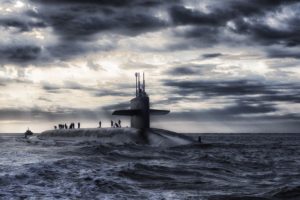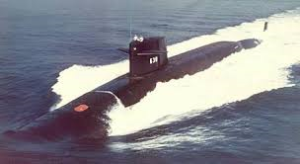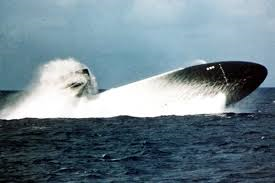The BA and the Submariner

Written By: Herbert Henry
I believe life is relative. That is to say, a lot of what we experience today can be related to something we experienced in the past—even if it appears to be irrelevant or unrelated. Take business analysis, for example. The Guide to the Business Analysis Body of Knowledge® (BABOK® Guide) is over 500 pages that describes processes, techniques, competencies, and knowledge areas that can be used to perform business analysis work successfully. Every client and every project can be different requiring different approaches. But you can probably recollect some of your past experiences and easily relate them to your current business analysis work that may aid in better understanding the tasks at hand. Maybe the time you played organized sports in high school, or participated in scouts, or even experiences during previous employment could provide perspectives towards your current work.
Back in ’92, I retired from the Submarine Service after 21 years of service and moved back home. Obviously, I needed a new livelihood to provide for my family since there aren’t any submarines in central Pennsylvania. The growing trend back then was computers and computer processing, so I trained as an AS/400 programmer—RPG and COBOL. As years went by, I completed a lateral move to client/server programming and eventually became a Business Analyst (BA). I wasn’t quite sure about the role of a BA until I started to see the relationship between being a BA and being a submariner.
Teams:
The primary objective of any submarine is to go to sea, accomplish the assigned mission, and return to port safely and successfully. To this end, everyone onboard the submarine must know the responsibilities of other crew members and know the operation of every submarine system in case of an emergency. In the unlikely event of an emergency, the crew must work together to effectively respond in a timely manner and take appropriate action to isolate further damage. Any crew member can be expected to perform another crew member’s tasks in his absence, within certain limitations (e.g., only nuclear-trained personnel can perform tasks on nuclear systems).
The primary objective of any project is to deliver a product to the client’s satisfaction within scope, on time, and under budget. Each team member should understand the responsibilities of others on the team. If there is a situation that threatens the project timeline, the team must work together to effectively respond in a timely manner and take appropriate action to limit any impact to the project, within certain limitations (e.g., only developers can write code).
Assessments:
If there is an emergency or incident onboard the submarine, there must be a subsequent investigation of the cause, evaluation of the incident, and a de-brief of the crew to ensure the situation does not happen again or at least know the actions to lessen the severity. The findings are documented and forwarded up the chain of command.
When the project timeline is compromised, an investigation of the cause and an After-Action Review with the project team can ensure the situation does not happen again or at least know the actions to mitigate the severity. The findings are documented and forwarded to the governance committee.
Policies:
Every submarine command has their own policies and procedures to follow for the safe operation and maintenance of their submarine. These policies and procedures must follow the overarching policies and procedures set by the squadron commander, fleet commander, and, ultimately, the U.S. Navy.
So, too, every consultancy has their own policies and procedures to follow to provide excellent service to their clients in management consulting, process improvement, project management, and implementation support. They normally follow the latest processes set by many professional associations and organizations within the respective fields and conform to the respective clients’ policies.
Training:
Submarine crew members attend various technical schools to earn classification codes designating them experts in their selected fields. As do BAs, by attending various training sessions to earn certifications designating them experts in their selected areas of expertise.
Submarines have a qualification program where a Sea Daddy (mentor) is assigned to a sailor to look after and guide him (females were not assigned to submarines way back then) towards his qualifications in submarines. A consultancy may assign mentors to any personnel working to complete a certification in a BA field.
My submarine experiences have not made me an expert in my field, but it made adapting to a BA profession a little easier. How about you? Can you think of any past experiences that may have contributed to positive influences towards your current position?


Herbert Henry – Consultant

Herbert Henry is an accomplished Business Analyst and Technical Writer with experience in all phases of the business analysis processes. He is a forward-thinking analyst with a unique combination of business, technical, and consulting experience to bridge gaps among business units and IT groups. He is a thorough, process-centric consultant practiced in executing high-level projects that require accelerated input from IT groups. He is accomplished in leveraging strong analytical, interpersonal, and technology skills to influence system enhancements and maintenance requests, while delivering quality solutions. Herbert possesses extensive communication experience, as well as knowledge in Product Lifecycle Methodology. His education and training background include: Bachelor of Science (BS), South Illinois University – 1990; Certified Business Analysis Professional™ (CBAP®) – 2013; ITIL®v3 Foundations – 2013; Certified ScrumMaster® – 2017; TOGAF 9® Foundation – 2019.
 Tap to email
Tap to email
